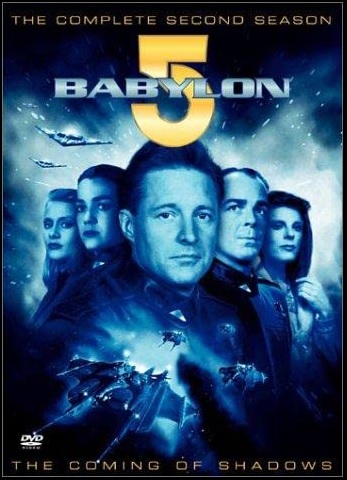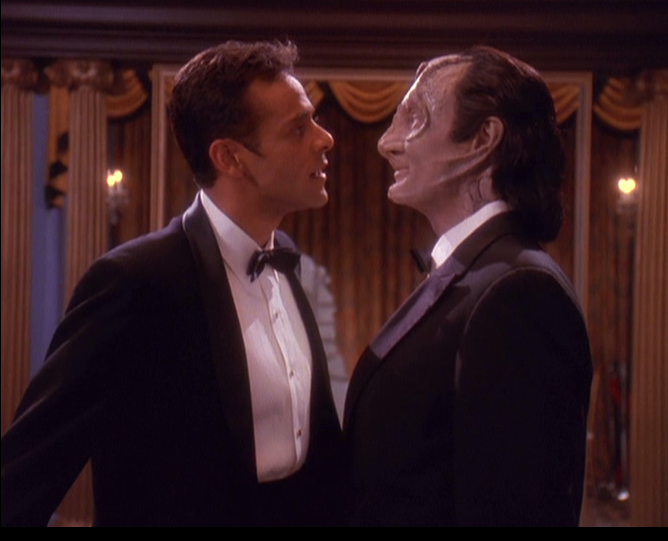The fifth and final season of Babylon 5 has its problems, but it holds up well on rewatching. Here’s our take:
- “No Compromises” – 4
- “The Very Long Night of Londo Mollari” – 7.5
- “The Paragon of Animals” – 5.5
- “A View from the Gallery” – 6
- “Learning Curve” – 5
- “Strange Relations” – 4.5
- “Secrets of the Soul” – 3
- “Day of the Dead” – 4
- “In the Kingdom of the Blind” – 3.5
- “A Tragedy of Telepaths” – 4
- “Phoenix Rising” – 2
- “The Ragged Edge” – 4.5
- “The Corps is Mother, the Corps is Father” – 4.5
- “Meditations on the Abyss” – 7
- “Darkness Ascending” – 3
- “And All My Dreams, Torn Asunder” – 4
- “Movements of Fire and Shadow” – 4
- “The Fall of Centauri Prime” – 5
- “The Wheel of Fire” – 7
- “Objects in Motion” – 6
- “Objects at Rest” – 3.5
- “Sleeping in Light” – 6
The average rating for this season is 4.7, which is in line with the rest of the series. It was a little surprising to review the numbers and find that season 5 held up so well, since it is so different from the rest of the series. What had been planned as a five-season story got squished into four, then the series unexpectedly got picked up for a fifth season, so new stories had be written to fill out the time. The effects of these compromises are plain in season 5. Some of the new storylines go on too long, like the refugee telepaths on Babylon 5; others don’t have enough time to develop the depth they need, like the Drakh war. That this season holds up as well as it does largely rests on the excellent writing and acting work of previous seasons, developing characters with complicated stories and relationships still to be worked out.
There are no standout great episodes this season, but none that are truly terrible, either. The lowest rating we gave for this season was 2 for “Phoenix Rising,” which brings the telepath story to a head. That storyline as a whole was marred by clumsy writing and hammy acting. Add to that a further unpleasant turn for Garibaldi in this episode, after the character spent most of the past season and a half being mean and miserable, and it’s not an episode we care to come back to often.
At the top of the scale, the best episode of the season is “The Very Long Night of Londo Mollari,” at 7.5, a surreal and poetic episode mostly set in Londo’s unconscious as he reckons with the crimes of his past while fighting for his life after a heart attack. This episode pays off the long and sometimes painful growth of the character from cynical hack to manipulative monster to wise but broken leader. Peter Jurasik’s performance of Londo, always one of the strengths of the series, gets to shine here as the character tumbles through fear, anger, resentment, petulance, vulnerability, and finally contrition.
In other developments, Claudia Christian departed the series this season, so we get Tracy Scoggins playing the sharp and sharp-edged Captain Lochley. The character largely fills the role vacated by Ivanova and doesn’t get much time to set herself apart from her predecessor, but Scoggins makes the most of the time she gets.
Babylon 5 is, like many great things, deeply flawed in some ways. Some of its weaknesses are the result of a turbulent production environment; others are inherent in the story or come from the limitations of the creators who worked on it. Yet its great moments shine through despite those weaknesses, as brilliant, touching, even transcendent now as they were when the big blue barrel of a space station first appeared on our screens decades ago.
Image: Babylon 5 season 5 DVD cover via IMDb
In the Seen on Screen occasional feature, we discuss movies and television shows of interest.









